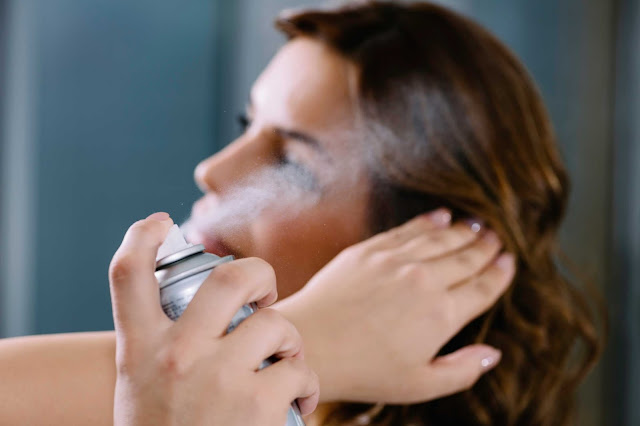Every day is a good hair day when you can turn limp, greasy strands into a clean coif in seconds. But there are some catches. Here's what you need to know.
Dry shampoo is not new
Dry shampoo is having a moment—one beauty editor famously wrote that by week's end, her hair is 90 percent dry shampoo—but it's actually been around in some form or another for centuries. (There's some evidence that people in Asia were using clay in their hair thousands of years ago.) Even the dry shampoo we know today got its start sometime in the 1940s, when it was primarily known as Minipoo. These days there are over 50 varieties of dry shampoo on store shelves, and many do more than just salvage a blowout or disguise a missed shower. For example, if you're looking for cool-girl body and texture, there's Kérastase Couture Styling Powder Bluff. For fine strands, there's Alterna's Cleanse Extend Dry Shampoo, a lightweight spray that won't weigh hair down even on the fourth day after your blowout. Klorane Dry Shampoo with Oat Milk Natural Tint has a formula made for brown hair to ease the process of blending out any residual white powder. If you're looking to get out the grime rather than just mask it, Living Proof Perfect Hair Day has little molecular sponges that soak up oil, sweat, and odor, so you can whisk them away when you brush.

Dry shampoo is not actually shampoo
Despite its name, dry shampoo is not a hair cleanser. Unlike regular shampoo, which is formulated with water and cleansing agents that rinse away oils and impurities, dry shampoos are mostly made up of alcohol, starch, or clay (spray versions) or clay, talc, and starch without the alcohol (powder versions), according to Hien Nguyen, cosmetic chemist and co-founder of Function of Beauty, a start-up that offers customized shampoos and conditioners. With either type of dry shampoo, the porous ingredients work by soaking up excess oil, which is what breathes new life into yesterday's blowout or your sweaty strands after hitting the gym. (For super-sweaty post-workout hair, we like Elizabeth and James Nirvana White Dry Shampoo—it has micro powder enriched with natural rice starch to absorb oils while adding a mist of its most addictive scent. Check out the things your hair is desperately trying to tell you.

With dry shampoo, you can have too much of a good thing
Dry shampoo is a godsend between real washings or as a touch-up after your workout, but it's not meant to replace a good old-fashioned shampoo and conditioner. And spraying it on every day will actually make your hair worse, because it will lead to a build-up of product that can dull your color and irritate your scalp, according to Butterfly Studio Salon stylist Danielle Allyson. (Check out the other hair mistakes top stylists commonly see.) Like your face, your scalp needs regular cleansing and exfoliating to get rid of bacteria, remove dead skin cells, and stay healthy. Allyson's recommendation: Use dry shampoo no more than three times a week to give your hair some time to breathe between uses, and follow it up with a clarifying shampoo the next time you wash your hair. Try Fekkai Apple Cider Shampoo, an apple and pear-scented, silicone-free cleanser for removing product build-up.

Dry shampoo needs time to set
When you first use dry shampoo, you might be surprised to see a powdery white residue on your hair. But don't panic—it's completely normal. Just wait two minutes for your hair to absorb the dry shampoo, then work it through with a comb, a brush, or your fingers, and the white-powder look will vanish. If you're worried about it, try a formula that's expressly designed to disappear: Style Edit's Invisible Dry Shampoo, with a blend of oil-absorbers and neutralizers that cleans hair without dulling its natural shine. (Related: Check out these hair myths we need to stop believing.)

